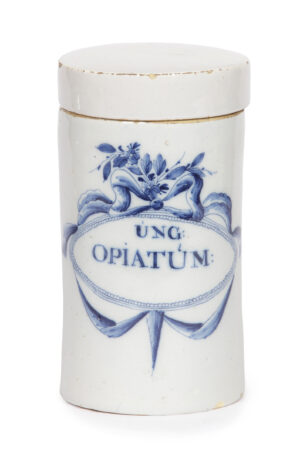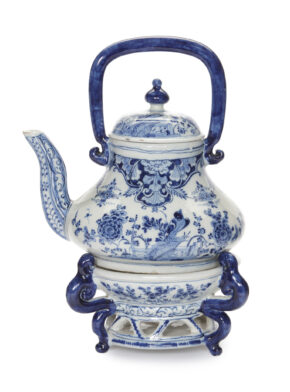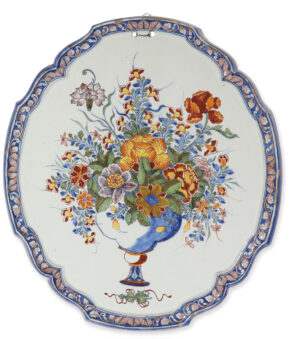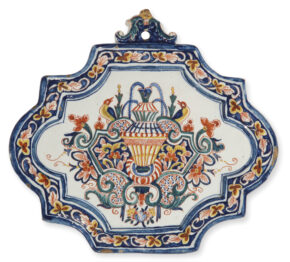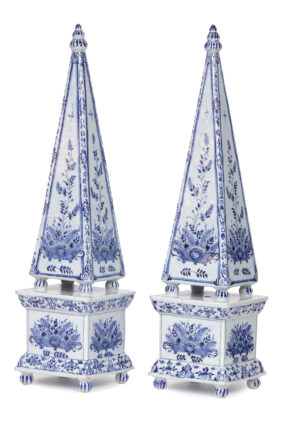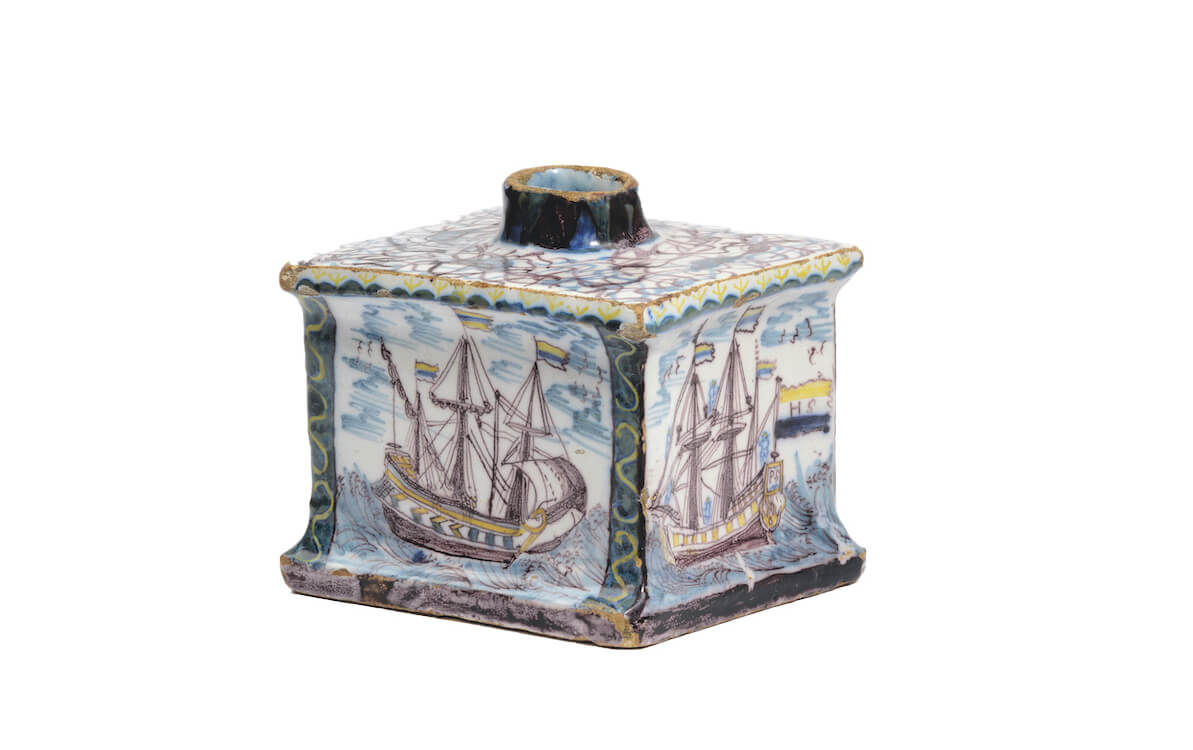
[popup_trigger id=”13756″ tag=”span”]![]() [/popup_trigger]
[/popup_trigger]
Images on this website are licensed under a
Creative Commons Attribution-NoDerivs 3.0 Unported License.
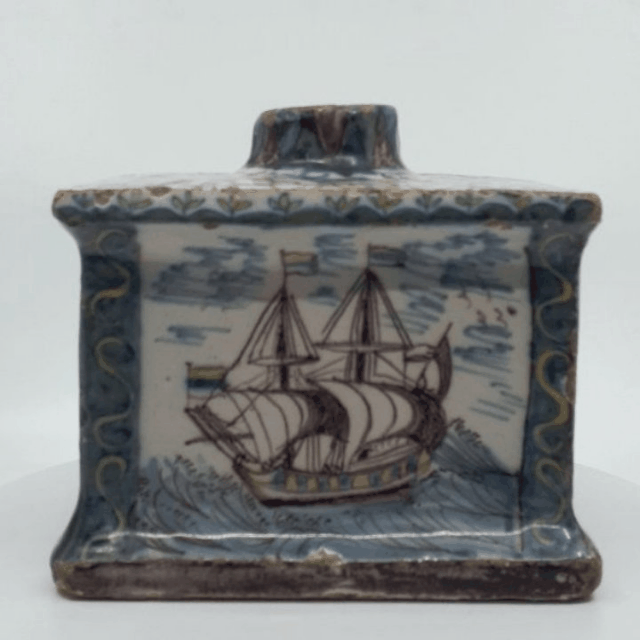
OBJECT
•D2023. Polychrome Rectangular Tea Canister
Amsterdam, circa 1740
Attributed to De Twee Romeinen (The Two Romans) factory on the Prinsengracht in Amsterdam
Painted on all four sides with a manganese delineated galleon with full blown sails and flying pennants in yellow and blue, one with a flag inscribed H.S., to the rear of the ship inscribed P.S, with various sailors on high sea. Surrounded by a blue frame enhanced with scrolls and florettes, the flat top marbleized in manganese and blue, and the circular neck encircled with a manganese, green and blue petal border.
Dimensions
Height: 13.6 cm. (5.4 in.)
Provenance
Christie’s Amsterdam, December 3rd 1991, lot 160 (then attributed to possibly Liverpool);
The Van der Vorm Collection, The Netherlands
Note
Attributed to De Twee Romeinen factory, this tea canister was built from small rolls of clay with the thickness of a tile. As Van Dam describes in “‘Delfts’ uit de provincie, Aardewerk uit Hollandse tegelfabrieken”, in: Vormen uit Vuur, 1999, vol. 168/169, there are four other similar tea canisters, although the decoration on each differs. The similar edges, rims, ornament and the comparable finish on the underside, which was sponged after glazing, make an attribution to one tile factory and a date between 1725 and 1750. Objects made between these years clearly show the characteristics from a tile factory product: they are large, rather heavy, sometimes even a bit bulky and are delicately decorated with soft, somewhat grey shades of blue. The objects attributed to De Twee Romeinen factory, such as this tea canister, are heavier, made with more effort, and much more varied in shape and decoration. In the eighteenth century, the objects produced at tile factories in Amsterdam were fired ‘freely’, since saggars were not available.
Similar examples
A tea canister of a similar shape, but with polychrome chinoiserie decoration, also made at De Twee Romeinen, is in the Rijksmuseum, Amsterdam (inv.
no. BK-1959-74); another canister with chinoiserie decoration, produced at De Twee Romeinen, is in the Museum for Künst und Gewerbe, Hamburg (inv. no. 1930.188); and two additional blue and white tea canisters are in the collection of Van Nie & Winnubst Antiquairs, Amsterdam and in a private collection; all illustrated in Van Dam, “‘Delfts’ uit de provincie, Aardewerk uit Hollandse tegelfabrieken”, in: Vormen uit Vuur, 1999, vol. 168/169, pp. 56-57.

